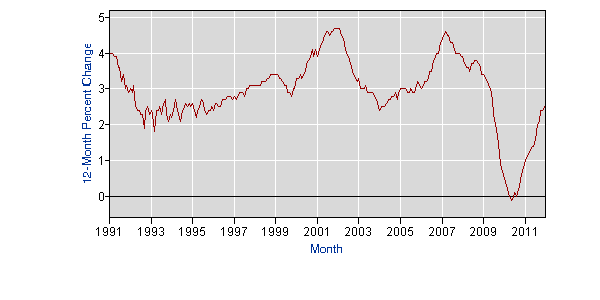February 25, 2012
The NYT told readers that a shortage of rental housing is driving up rents. This is wrong and wrong.
The NYT story is that the flood of foreclosures has forced people out of their homes and led them to look for rental housing. While this is true to some extent (homeownership rates have fallen), former homeowners would have discovered that there was a glut of rental housing.
Furthermore, ownership units can become rentals and vice-versa. This is true even for multi-family units, but 30 percent of rental properties nationwide are single family homes. These obviously can be converted very quickly to ownership units or more have been ownership units in the recent past.
So, if we look at the data on rental vacancy rates, we find that in the fourth quarter of 2011 the vacancy rate was 9.4 percent. This is down from the peak of 11.1 percent in the third quarter of 2009, but it is higher than any rate recorded in the 50s, 60s, 70s, 80s, or 90s.
Turning to rents, the best measure to use is the Bureau Labor Statistics (BLS) measure for owner occupied housing. This measure will have some inertia, since it included all units, not just units that have been on the market. (There is more variation in price on units that are placed on the market.) However, it is more desirable than other measures because the BLS controls for quality changes and also because it only includes the rental value of the unit itself. It pulls out utilities which can have a large effect on rents, if they are included in a lease.
Year over Year Change in Owner Equivalent Rent
 Source: Bureau of Labor Statistics.
Source: Bureau of Labor Statistics.
As can be seen, rents are increasing somewhat more rapidly than they were at the trough of the downturn, but they are still just rising pretty much in step with the rate of inflation. In fact the current rate of increase is lower than the rate of increase at any point in the decade prior to the beginning of the recession. While there may be some cities where rents are rising especially rapidly, or some narrow markets within cities, clearly this is not generally the case.







Comments